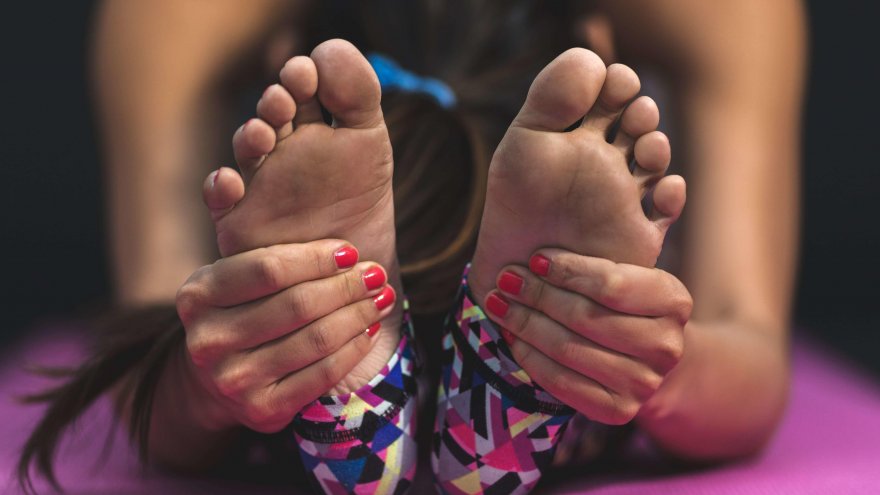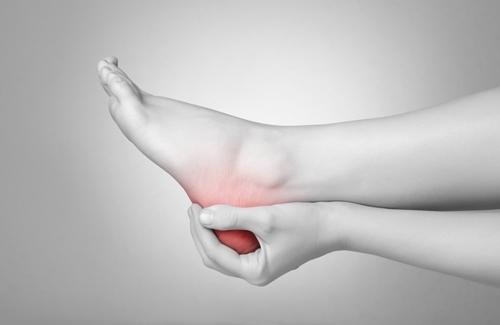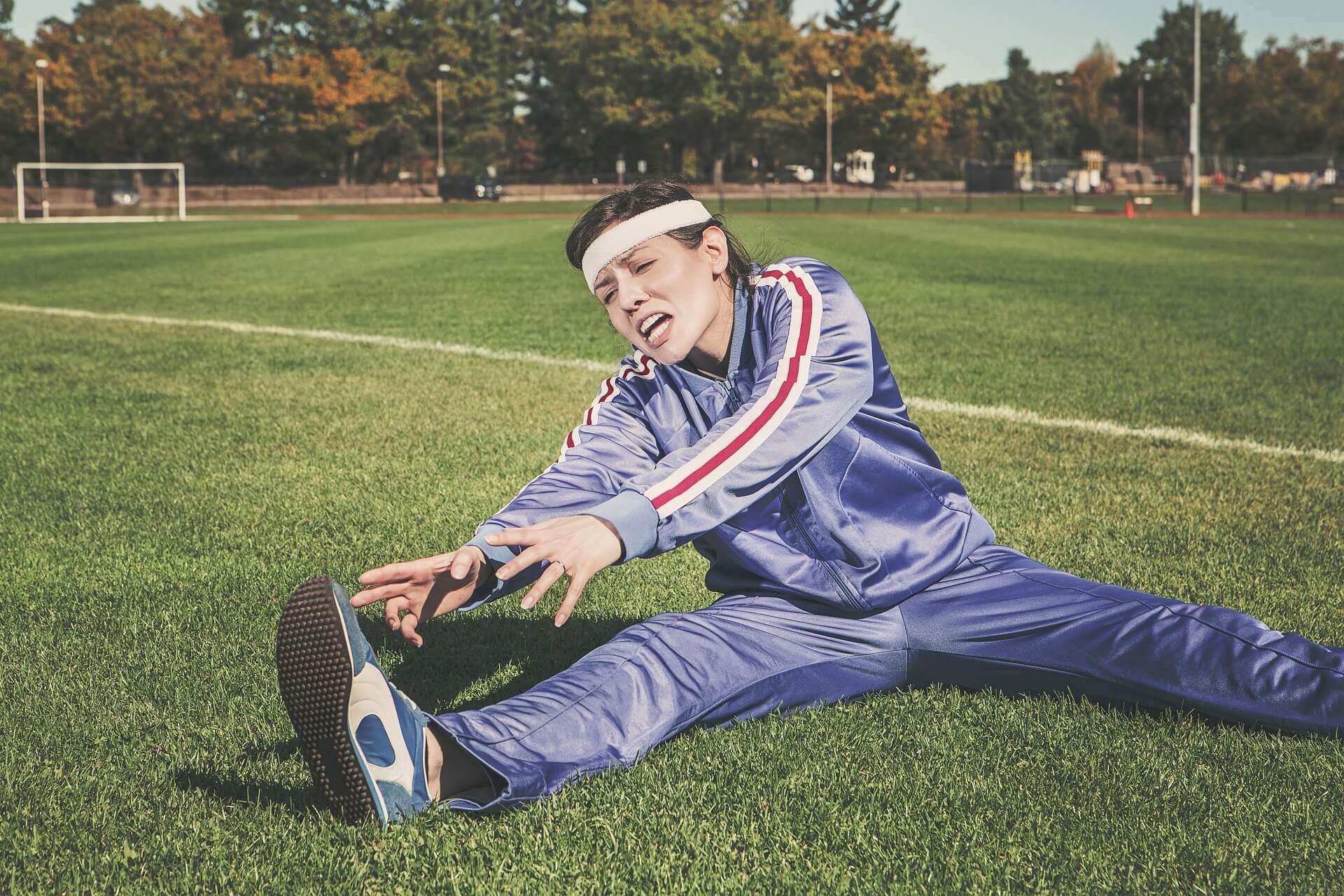My Feet Hurt. Should I Run?

As a runner, you are likely keenly aware of any and all sensations in your feet and legs. These are, after all, the primary tools of your sport. So, when you start to feel any pain or discomfort, you may reasonably feel concerned.
This is particularly an issue when it comes to your feet, which literally bare the brunt of your training. At what point, though, should pain in your feet stop you from running?
What’s Really Going On
To fully answer this question, though, it’s important that you first have a decent understanding of how your feet are structured and how they are affect by your workouts. From there, it’s easier to grasp what sort of issues you may be dealing with and how to proceed.
Although many people tend to take the humble foot for granted, it’s an incredibly complex and effective machine. Not only do your feet need the strength to deal with impact forces that could reach up to seven times your body weight, but they also have to be flexible enough to quickly propel you forward regardless of the terrain on which you’re running.

In order to accomplish this, each of your feet is composed of 26 bones that make up 33 different joints. These bones are especially stout and strong when compared with other bones found in the human body. All of this is bound together by over 100 muscles and tendons. Much of this connective tissue also runs up into your ankles to enhance your mobility and stability.
What Could Go Wrong?
But… why does any of this matter? Because the complexity of foot anatomy highlights a vital point: With all of those interconnected moving parts, lots of stuff could go wrong.
When trying to decide whether or not the particular type of pain that you’re facing should stop you from running, then, there are a lot of different factors to consider. That pain could be from damage to any one of those tendons and ligaments or even from a broken bone.

By far, however, the most common cause for foot pain in runners is tendonitis. Every step you take requires the muscles and tendons in your feet to absorb a huge amount of force – often totally over 1000lbs – and then throw your full body weight forward. Which is a ton of work for those little muscles. But a single mile could require your feet to accomplish this task over 2000 times.
Over the course of a longer race like a marathon, then, the muscles and tendons of your feet perform an enormous amount of work. It’s totally understandable that this could lead to all sorts of problems.
When To Stay Home
The big question, though, is when you should give your feet a break. Like most athletes, runners tend to cultivate a sort of “no pain, no gain” attitude. And, often, this mental toughness if a valuable tool. Sometimes, however, it shows a lack of balance and could lead to further problems.
How do you know whether or not that foot pain is bad enough to postpone your run? That is a very difficult question – largely because of the complexity of the foot. To get a conclusive answer, then, you really need to visit a podiatrist.

In the meantime, the basic principle to keep in mind is this: If sharp foot pain comes on suddenly while you’re running, stop the activity. Try walking for a few minutes to allow your feet to recover. In some cases, the pain may dissipate. Then again, it might not.
The pain may also persist even after you’ve stopped running. This is a sure sign that you should see a specialist. Of course, even when the pain is intermittent anything that interferes with your training or reduces your performance justifies a doctor’s appointment.
Home Treatment
Before you see a doctor – or while your waiting for the day of your appointment to arrive – there are some things you do can at home to reduce foot pain. Depending on the type, location and severity of your pain, you might try any number of different strategies.
The standard recommendations of heat and cold therapy may help to reduce the pain and inflammation associated with tendonitis. Stretching your feet and ankles could also help and may also prevent future flair ups.

Which may seem like a strange prospect. Here are two basic stretches that, performed in succession, will effectively stretch all of the major muscles and tendons:
Toe Pull – Sit on the ground with your legs straight out in front of you and your toes pointed toward the ceiling. Slowly lean forward and grab the balls of your feet. Pull your toes back toward you until you feel a stretch in the soles of your feet. Hold for 20 to 30 seconds.
Rear Ankle Stretch – Kneel on the ground with your feet behind you. Extend your ankles so that the tops of your feet rests flat on the floor. Slowly lean back toward your heels until you feel a stretch in your ankles. Hold for 20 to 30 seconds.
Latest Articles
 Is Running on a Treadmill Easier Than Running Outside?Runners have their own preferences, whether it is treadmill running, running outside on the road, or exploring trails. So...
Is Running on a Treadmill Easier Than Running Outside?Runners have their own preferences, whether it is treadmill running, running outside on the road, or exploring trails. So... Is It OK to Use Trail Running Shoes on the Road?While trail running shoes can be used on roads, especially in situations where a runner encounters mixed terrains or pref...
Is It OK to Use Trail Running Shoes on the Road?While trail running shoes can be used on roads, especially in situations where a runner encounters mixed terrains or pref... How to Fix Sore Quads After Running?Rest, ice, gentle stretching, and over-the-counter pain relievers can help soothe sore quads after running. Also, ensure ...
How to Fix Sore Quads After Running?Rest, ice, gentle stretching, and over-the-counter pain relievers can help soothe sore quads after running. Also, ensure ... 10 Fruits With The Most Electrolytes to Replace Sports DrinksThese fruits are high in electrolytes such as potassium, magnesium, and calcium, essential for hydration, muscle function...
10 Fruits With The Most Electrolytes to Replace Sports DrinksThese fruits are high in electrolytes such as potassium, magnesium, and calcium, essential for hydration, muscle function...

